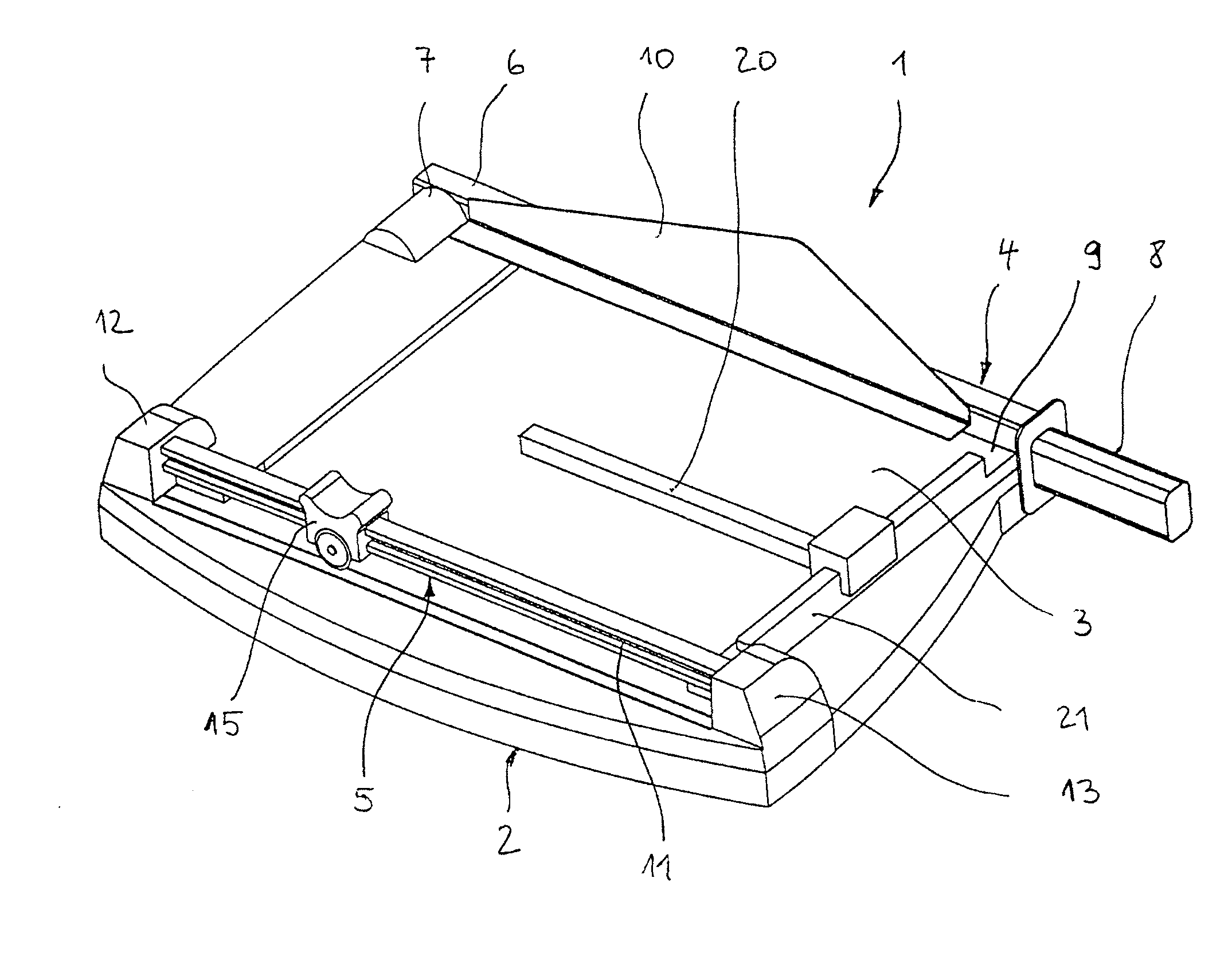Cutting unit
a cutting unit and cutting blade technology, applied in the field of cutting units, can solve the problems of excessive length being pushed downward by the blade, not trimmed cleanly, difficulty in producing a smooth cut edge, and the bearing assembly of the knife arm may acquire play, so as to achieve the effect of substantially longer
- Summary
- Abstract
- Description
- Claims
- Application Information
AI Technical Summary
Benefits of technology
Problems solved by technology
Method used
Image
Examples
Embodiment Construction
)
[0030]Cutting unit 1 depicted in FIG. 1 comprises a frame plate 2, substantially rectangular in plan, whose horizontal upper side forms a bed 3 for sheet material to be trimmed. A guillotine cutting device 4 is arranged on the upper (in this view) longitudinal side, and a rotary cutting device 5 on the lower (in this view) longitudinal side.
[0031]Guillotine cutting device 4 comprises a knife arm 6 that is mounted pivotably, in a bearing 7, about a horizontal axis extending transversely to the longitudinal side there. Knife arm 6 is equipped on its lower side, substantially over its entire length, with a cutting knife that is concealed in this view. Configured at the free end of knife arm 6 is a handle 8 with which knife arm 6 can be pivoted upward and downward. In the position shown, knife arm 6 is located in the lower terminal position.
[0032]The cutting knife of knife arm 6 corresponds to a counterknife 9 that is recessed flush into bed 3. Joined to knife arm 6 is a protective app...
PUM
| Property | Measurement | Unit |
|---|---|---|
| angle | aaaaa | aaaaa |
| angle | aaaaa | aaaaa |
| rotation axis | aaaaa | aaaaa |
Abstract
Description
Claims
Application Information
 Login to View More
Login to View More - R&D
- Intellectual Property
- Life Sciences
- Materials
- Tech Scout
- Unparalleled Data Quality
- Higher Quality Content
- 60% Fewer Hallucinations
Browse by: Latest US Patents, China's latest patents, Technical Efficacy Thesaurus, Application Domain, Technology Topic, Popular Technical Reports.
© 2025 PatSnap. All rights reserved.Legal|Privacy policy|Modern Slavery Act Transparency Statement|Sitemap|About US| Contact US: help@patsnap.com



